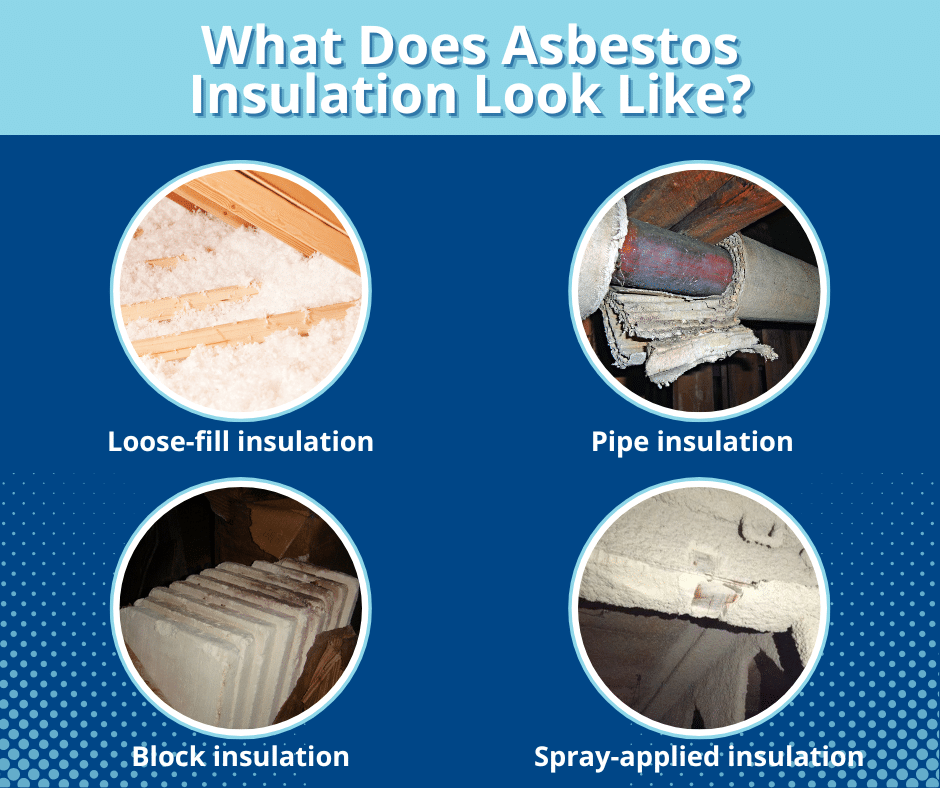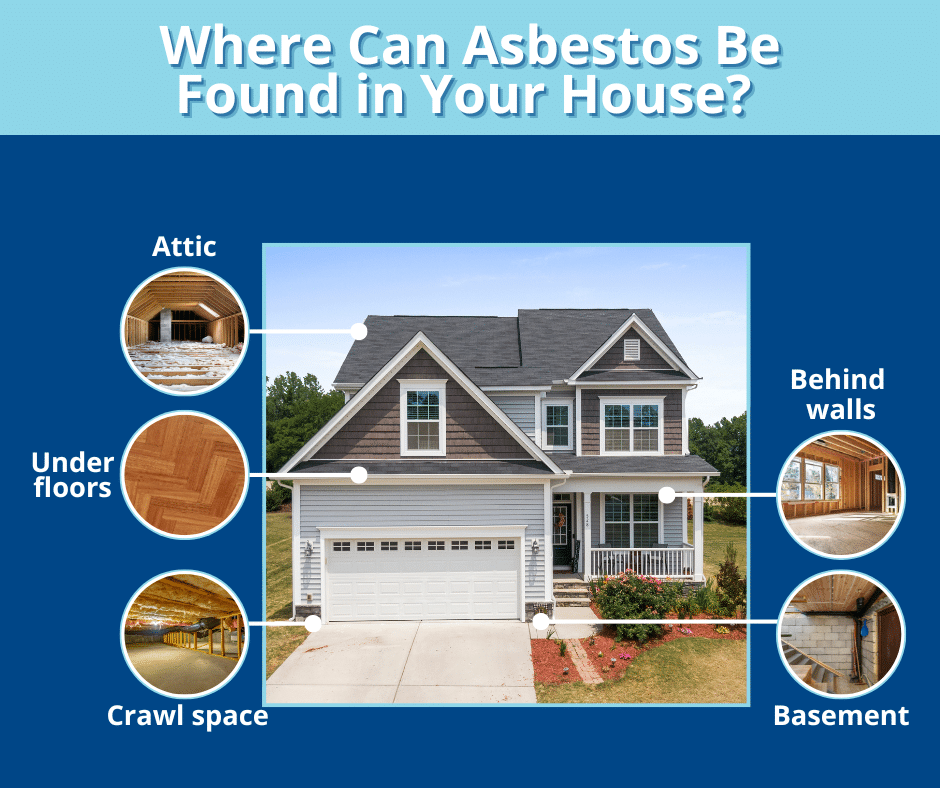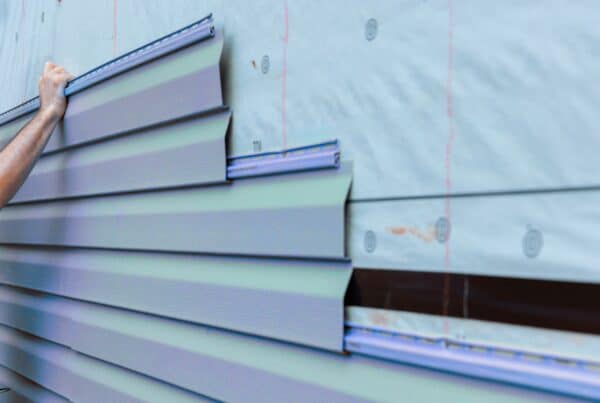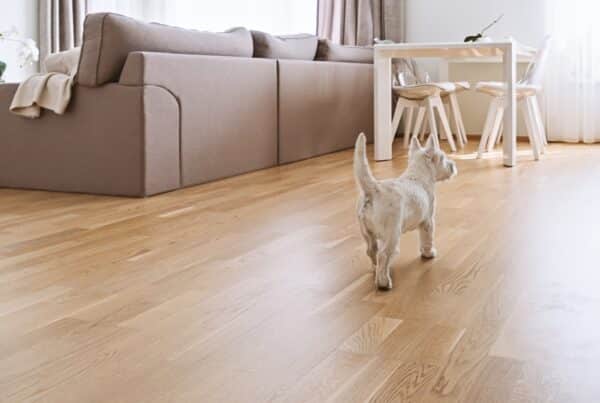
What does asbestos insulation look like in a home? In many cases, it shows up as gray, white, or brown. It may look fluffy, chalky, or wrapped around pipes, and it’s also found as loose-fill, rigid boards, or spray-on coatings.
Because it can take many forms, appearance alone isn’t enough to confirm asbestos. The only way to know for sure is through professional testing, but here are signs to be suspicious.
Why Asbestos in Insulation Matters
For decades, asbestos was used in insulation because it resisted heat, reduced fire risks, and provided effective soundproofing. Builders saw it as a cheap, versatile material that could be applied in almost any part of a home. Unfortunately, asbestos fibers are microscopic and can break loose from insulation, spreading into the air when disturbed.
When inhaled, these fibers can stay in the lungs for years, causing scar tissue and increasing the risk of serious illnesses such as:
- Asbestosis: chronic lung scarring
- Mesothelioma: a rare, aggressive cancer. In fact, asbestos is the number one cause of mesothelioma.
- Lung cancer: linked directly to asbestos exposure
Since many homes built before the mid-1980s still contain asbestos products, insulation remains one of the biggest hidden hazards. Homeowners, buyers, and renovators should know the basics of what asbestos insulation may look like and why it’s important to address it safely.

What Does Asbestos Insulation Look Like?
Asbestos insulation isn’t one-size-fits-all. Depending on when and how it was installed, it may take several forms. Here’s what you might see in an older home:
- Loose-fill insulation:
- Appearance: gray, silver, or brown; fluffy, pebble-like granules or shredded-paper texture.
- Common location: attics and wall cavities.
- Pipe insulation (wrapping or lagging):
- Appearance: white, gray, or off-white with a chalky or plaster-like surface; sometimes corrugated like cardboard.
- Common location: wrapped around hot water pipes, boilers, or furnace ducts.
- Block insulation:
- Appearance: rigid white or gray boards, chalky, and brittle to the touch.
- Common location: walls, crawl spaces, or near large heating equipment.
- Spray-applied insulation:
- Appearance: a rough, uneven coating that looks textured or lumpy.
- Common location: ceilings, beams, or concrete walls in basements and commercial buildings.
How It Differs from Safe Materials
- Fiberglass: pink, yellow, or white with a cotton-candy-like feel.
- Cellulose: gray or brown, shredded newspaper texture.
- Mineral wool: yellow, brown, or gray, thick and wool-like.
If insulation looks suspicious and the home was built before 1980, assume caution until tested.
Key Signs That Insulation May Contain Asbestos
While you can’t diagnose asbestos by looks alone, certain signs increase the chances:
- Age of the home: Homes built before 1980 are far more likely to have asbestos products.
- Location of insulation: Found in attics, basements, boiler rooms, or around hot water systems.
- Condition of the material: If it looks brittle, crumbling, or powdery, it could be asbestos deteriorating with age.
- Color: Gray, white, or off-white are common, but color is not a guarantee.
It’s important to remember that asbestos fibers are invisible to the naked eye. Even insulation that looks harmless could be dangerous if it contains asbestos.

Common Places to Find Asbestos in Homes
Asbestos insulation isn’t limited to attics. Depending on the building style and year of construction, you might find it in:
- Attics: Loose-fill or vermiculite insulation scattered across rafters and joists.
- Basements: Pipe wrap around plumbing and ductwork, boiler insulation, or spray-on coatings on concrete walls.
- Crawl spaces: Block insulation or debris from deteriorated pipe insulation.
- Behind walls or under floors: Old board insulation or soundproofing layers.
- Near furnaces and water heaters: High-heat areas were common places for asbestos.
This broad use makes asbestos difficult for the average homeowner to fully detect, which is why professional inspections are so valuable.
Why You Shouldn’t Rely on Appearance Alone
The problem with asbestos is that it mimics other, safer materials. For instance, vermiculite insulation looks like small, shiny pebbles and may or may not contain asbestos. Similarly, some white plaster-like pipe insulation is harmless, while others are asbestos-based.
Because of these similarities, even trained inspectors often need to collect samples for lab analysis. Homeowners should never cut into or remove insulation themselves to “check.” Doing so could release fibers into the air.
Testing remains the only reliable way to confirm asbestos.
How to Safely Handle Suspicious Insulation
If you come across insulation that you think might contain asbestos, safety should come first. Here’s what to do:
- Avoid disturbing it. Do not cut, scrape, or try to remove it.
- Keep the area closed off to prevent exposure, especially for children and pets.
- Do not vacuum or sweep the material, as this spreads fibers into the air.
- Hire a certified asbestos inspector or testing company to take samples safely.
The golden rule: if in doubt, leave it alone until tested.
Safer Alternatives to Asbestos Insulation
Fortunately, builders today use safe, effective insulation materials that improve energy efficiency without health risks. Common modern options include:
- Fiberglass: Affordable, fire-resistant, and widely available.
- Cellulose: Eco-friendly and made from recycled paper treated with fire-retardants.
- Mineral wool: Excellent for soundproofing and fire resistance.
- Spray foam: Expands to seal gaps, making it one of the most energy-efficient options.
If asbestos insulation is found in your home, professionals can remove it and replace it with safer alternatives. Not only does this reduce risk, but it may also lower energy bills.
Related Steps Homeowners Can Take
Since asbestos can hide in more than just insulation, homeowners should consider a broader safety approach:
- Test other suspect materials: Floor tiles, popcorn ceilings, and siding may also contain asbestos.
- Schedule a full home inspection: Professional inspectors can spot signs of asbestos and other hazards like mold or lead paint.
- Document everything: If you’ve had asbestos testing or removal, keep the records for resale value and peace of mind.
Related Questions
Is vermiculite insulation always asbestos?
Not always. However, most vermiculite insulation sold before 1990 came from mines contaminated with asbestos. Treat it as potentially hazardous until tested.
When did asbestos stop being used in insulation?
By the mid-1980s, asbestos was mostly phased out, though some leftover stock was still installed in later years.
Can I remove asbestos insulation myself?
No. DIY removal is unsafe and often illegal. Licensed asbestos abatement professionals have the training and equipment to remove it safely.
Conclusion
So, what does asbestos insulation look like? It can appear as fluffy gray loose-fill, chalky pipe wrap, rigid boards, or rough sprayed coatings. But the key lesson is that you can’t confirm asbestos by looks alone.
If your home was built before 1980 and you see suspicious insulation, don’t disturb it. The safest step is to schedule an inspection and testing.
At Boggs Inspection Services, we help Washington homeowners protect their families and make informed decisions. Contact us today to schedule your home inspection and get peace of mind about what’s behind your walls and in your attic.



